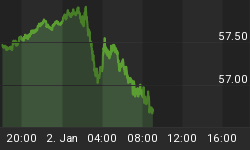A few weeks ago I wrote about the investment prospects of two asset classes in the energy space. One is a less-focused on part of the Canadian oil sector - conventional heavy oil in the Lloydminster area - and the other is the much beaten down North American natural gas sector.
Conventional Heavy Oil: Conventional heavy oil is not be be confused with its capital intensive and costly brethern unconventional heavy oil or "oil sands". It is heavy oil - less than 20 API - but it can be drilled and flows from the ground using simple, conventional, vertical well technology.
Peters & Company, one of Canada's most experienced oil & gas investment banks, recently published an excellent report on the rate of return on North American oil & gas plays ranging from "Barnett Shale" to "Mississippi light oil horizontal wells" (Read Full Report Here). Lloydminster conventional heavy oil, vertical wells were amongst the best performers in the North American energy sector with an average rate of return of 150% - the second highest in the industry. Only "Bluesky Seal Multilaterals" with a return of just over 200% were superior.
When investing in conventional heavy oil in western Canada, you benefit from two discounts: 1) the discount of heavy to WTI prices and 2) the discount of WTI to global prices. As such, Lloydminster conventional heavy oil represents a relatively inexpensive oil BTU. We also believe that fundamental drivers are in place for continued low and even declining heavy oil differentials:
- Declining heavy oil production from Venezuela & Mexico
- Improved pipeline capacity projected over long term
- Heavy oil refining has highest margins relative to other crudes
In addition, the wells are inexpensive and shallow, entailing less risk. All of these factors go to generating higher rates of return.
Natural Gas: For the extreme value oriented investor with a long-term horizon, NG is trading at historic lows. More research from Peters & Company shows that prices have to recover to around $4/mscf to $5/mscf from current levels at $2/mscf in order for operators to make money.


If prices do not rise then production will decline. Or more accurately, operators are going to shut in production (voluntarily or via bankruptcies) which in turn will drive prices back to break-even levels.
We believe that NG assets with large reserves and modest production levels necessary to maintain leases can be re-structured to create a low cost-of-carry long position - one which demonstrates distinct cost, volatility and return advantages over:
- traditional long NG futures exposures which due to contango currently in the forward strip incur material roll losses; and
- investments into operating NG producers which come with 1) material bankruptcy risk and 2) have built in cost structures which make shutting in their entire production bases and going passive long NG difficult.
Obviously this is more an investment for deep value investors with a long investment horizon but to find a large, liquid asset class with such a pronounced margin of safety in today's markets is rare and must be considered (Read More).
In many ways these two investments speak directly to the idea of "discounts hiding in plain sight". Many investors are sceptical that deeply discounted, value investments can be found in today's efficient capital markets and yet as an investor you could/can acquire:
- Farmland in Saskatchewan in 2008 at an average of $400/acre, while today prices average over $600/acre
- Lloydminster conventional heavy oil assets in 2012 at a rate of return more than 50% higher than most North American energy plays
- Small Medium Enterprises ("SME") in western Canada at around 4-5 times earnings, generating rates of return almost 4 times private equity averages in other developed markets
- Natural gas assets at $2/mscf when industry break-even levels may be 2 to 3 times higher than this
None of these investments were/are particularly hidden or hard to analyze - hence the concept of "discounts hiding in plain sight". It is just a straightforward matter of looking beyond the short-term and trying to understand the underlying value drivers.

















